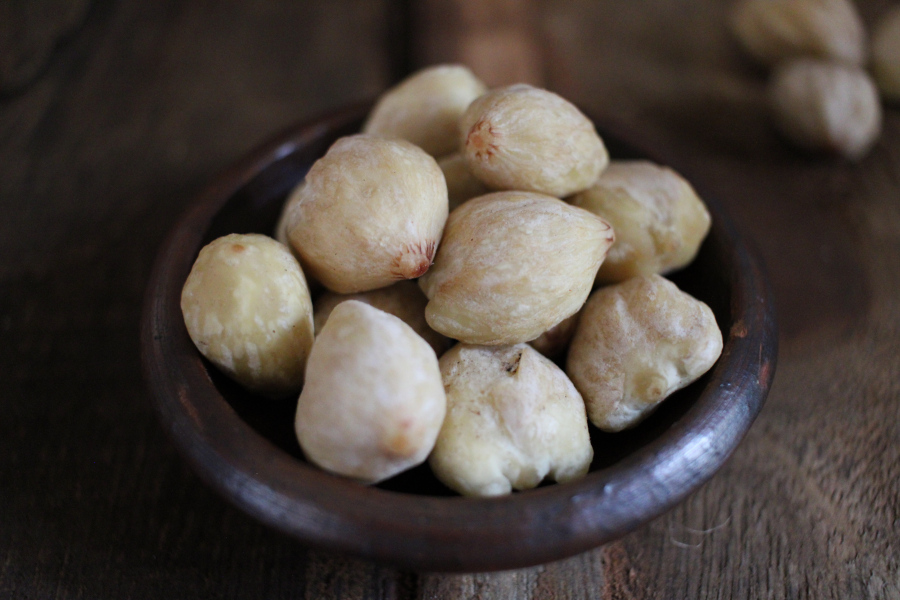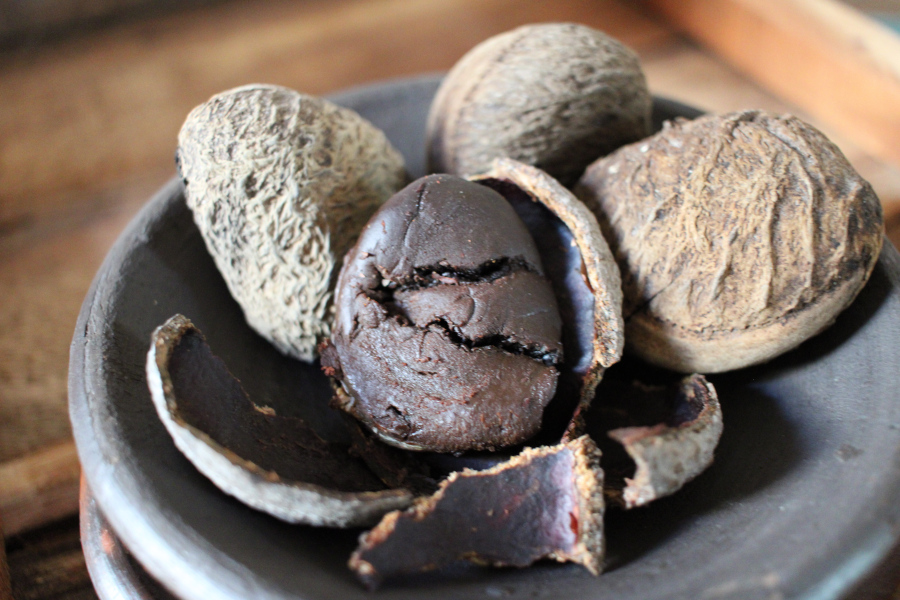Indonesian cuisine boasts complex flavours, often because of bumbu, or spice mixtures. Each bumbu is unique and consists of several different herbs and spices, lending flavor to each dish and giving it its special signature.
The herbs and spices used to make bumbu often have to be prepared before cooking in order to bring out the best flavors and aromas, and also to extend their shelf life. This preparation is sometimes overlooked. Novices, especially, can sometimes be perplexed and puzzled, not knowing what to do with these exotic ingredients.
In this first of several articles, we’ll be showing you how to prepare basic spices and herbs prior to cooking, so as to extract the best flavors from them.
Lemongrass

One of the most versatile herbs used in many Asian cuisines, lemongrass is used to flavor soups, curries, stir fries and even drinks.
There are few different ways to prepare lemongrass. The first thing to do is to always peel and discard the hard/dried outer layers. After that, trim the base and top of the stalks, leaving only the bottom 15 to 20 cm.
To release the aromatic oils, gently smash the stalks with the back of the knife, a pestle or a rolling pin.
Lemongrass can be chopped into smaller 5 cm pieces, knotted (the most common prep in Indonesia, especially in Java), pounded into a pulp, or thinly sliced. For pounding or slicing, use only the bottom 7 to 8 cm, where the stalks are fresh and tender.
Fresh lemongrass keeps well in the refrigerator for a few weeks. It can also be frozen or dried, but make sure to keep it in a ziplock bag or a sealed container to retain the fragrance.
Candlenut

A very common ingredient in Malay and Indonesian cooking, candlenuts are used to thicken and enrich soups, curries and stews. It is mildly toxic when raw, but the toxicity disappears upon cooking.
Candlenuts are usually blended with other spices into a fine paste to add creaminess to dishes. But before that, they are pan roasted for a few minutes until slightly charred. This releases their flavor and aroma. When pan roasting, make sure to flip it several times to avoid burning. Candlenuts can be also roasted in an oven for around 20 minutes at 160 Celcius (350F). Roasting will remove most of the water content, so it can be stored longer.
Once cooled, roasted candlenuts can be stored in a tightly sealed jar for a few weeks, ready to use.
In Indonesia, candlenuts are only used for cooking, and never for snacking.
Keluwak

Indigenous to Indonesia, Malaysia and Singapore, keluwak (or also called keluak, keluwek, pucung, puchong, buah kepayang and many more) is the seed of the poisonous keluwak fruit, which needs to be carefully treated before it can be consumed. The seeds are boiled, and then buried in a pit filled with ashes and left to ferment over a period of 40 days to reduce the toxicity of the hydrocyanic acid contained in all parts of the tree, including the seeds. This is usually done before it’s sold in the stores, so you don’t have to worry about doing it yourself.
Appreciated for its nutty flavour, keluwak gives a unique black color to the dish and it’s commonly used in Indonesian dishes, such as rawon, gabus pucung or sop konro. Keluwak is also an important ingredient in one of the most well-known Peranakan dishes, ayam buah keluwak.
In the market/store, keluwak is available in two forms. One is the whole seed with the shell intact, and the other is the extracted kernel, in a small packet, ready to use.
For the ready to use version, if the flesh is still soft and moist, it can be blended straight away with other spices, but if it’s already dried up, soak it with warm water for a few minutes.
The whole keluwak seed will require more effort to prepare. The shell is very hard and it needs to be cracked open using a mortar and pestle, or a hammer. Position the nut securely on a mortar or a hard surface, and crack with a pestle or hammer. Open the cracked shell with your fingers and scoop the kernel using a teaspoon. The kernel should smell slightly fermented. If it has a repulsive smell or is dried up/shrivelled, throw it away, as it’s not good.
Once extracted, the flesh is ready to be blended with other spices. Keluwak kernels keep well in the freezer for a few weeks. Keluwak is not supposed to be eaten raw.




